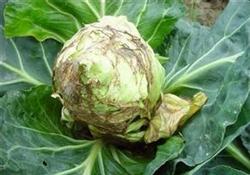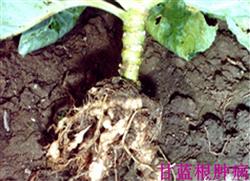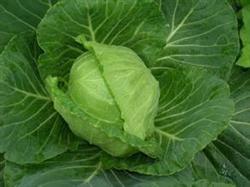What if the cabbage gets Sclerotinia sclerotiorum?

Answer: low temperature and low light in early spring are beneficial to the occurrence of Sclerotinia sclerotiorum. After the plant is susceptible, it first appears waterlogged disease spot, and then turns into white disease spot, which seriously causes plant rot. Prevention and control methods: 1. Agricultural prevention and control. Rinse seeds with 10% salt water or 10% 20% ammonium sulfate before sowing, dry and sow seeds. Setting the temperature of the seedling bed to 55 ℃ for 2 hours before sowing could kill the sclerotia in the soil. Rotation with cruciferous crops for 2-3 years. Dig deep into the soil and bury the remaining sclerotia in the soil layer below 10 cm. Apply sufficient base fertilizer, increase phosphorus and potassium fertilizer, and do not apply nitrogen fertilizer. Strengthen drainage to make the soil moderately dry. When diseased plants are found, they should be pulled out in time, and the diseased plants should be taken out of the field and burned or buried deeply. two。 Chemical control. The early stage of the disease should be protected by spraying in time, focusing on the base of plant stem, old leaves and ground. Can be mixed with 5% ammonium chloride powder 2% 2.5 kg fine soil 15 kg per mu and sprinkled between the rows. Spray 50% Sukeling wettable powder 2000 times liquid or 40% sclerotia net wettable powder liquid 2000 times, spray once every 7 to 10 days, 2 times for 3 times.
- Prev

Prevention and control of diseases, insect pests and weeds in cabbage vegetables at seedling stage
Cabbage root swelling disease mainly harms cruciferous vegetables. After the onset of the disease, the root is enlarged and tumor-like, so it is called root swelling disease. In general, the main root is lumpy after infection, and the fine root, branch root, lateral root and fibrous root are locally swollen after infection. The simple diagnosis of root swelling disease is similar to that of root knot nematode disease in the field. It can be dissected when it is different.
- Next

Key points of cultivation techniques of cabbage in spring
The main results are as follows: 1. Timely sowing and timely sowing is one of the important technical measures for spring cabbage cultivation. If the sowing is too early, the seedling growth is larger, and the continuous low temperature in early spring makes the seedlings pass through the vernalization stage prematurely, which is prone to early bolting. On the contrary, sowing too late, the maturity period is delayed and the economic benefit is affected. Hangzhou area is generally in February.
Related
- Where is it suitable to grow horseradish in China? it is expected to see the middle altitude horseradish in Alishan.
- How to prevent tomato virus disease reasonably? (Control methods included)
- Many people like to plant towel gourd on the balcony. What are the main points of this method and management?
- What crops can chili peppers be mixed with?
- Fertilization techniques and matters needing attention in Tomato
- What are the grafting techniques for peach seedlings in spring?
- Harm and control methods of root swelling disease of Chinese cabbage
- What are the pests of sweet potatoes? How to prevent and cure it?
- Symptoms, causes and Control methods of navel Rot in Tomato
- The cause of "Cucumber rotten bibcock" in Farmers' planting Cucumber and its Control Plan

